FOMO marketing drives 60% of sales. But how is it so effective? FOMO statistics can help you better understand that.
In this article, we will share with you up-to-date FOMO statistics, so you can see how important FOMO marketing can be for your business.
- What Is FOMO?
- General FOMO Statistics
- Millennials FOMO Statistics
- Marketing FOMO Statistics
- Social Media FOMO Statistics
- What Causes FOMO?
- 5 Effective Ways You Can Use FOMO
- Things To Watch Out for When Using FOMO
What Is FOMO?
FOMO stands for “fear of missing out.”
It refers to the anxiety or apprehension that arises when you believe you might be missing out on an interesting, exciting, or rewarding experience that others are having.
This phenomenon is widespread today, where social media platforms like Facebook, Instagram, and Twitter make it easy to see what other people are doing at any given moment.
FOMO can lead people to engage in behaviors they might not otherwise choose to participate in, for example, making a purchase to avoid FOMO!
Now that we understand FOMO, let’s jump right into the FOMO statistics.
General FOMO Statistics
- 60% of people make purchases because of FOMO, mostly within 24 hours.
- A study conducted by OnePoll found that 69% of Americans have experienced FOMO in some form, with social media being a significant contributor.
- A survey by the American Psychological Association found that 56% of adults in the United States experienced FOMO during the COVID-19 pandemic, with social media again being a significant factor.
- A report by Experian revealed that 69% of millennials overspend to keep up with their peers and avoid FOMO.
- In a survey conducted by TD Ameritrade, 73% of millennials said they had spent money they didn’t have on experiences to avoid FOMO.
These FOMO statistics demonstrate that fear of missing out is a prevalent phenomenon, particularly among millennials.
Resource: How To Respond to Negative Reviews + FREE Response Templates You Can Copy Paste
Millennials FOMO Statistics
- A study by Eventbrite found that 69% of millennials experience FOMO, and 60% make reactive purchases to avoid missing out on events.
- 48% of millennials have spent money they didn’t have to keep up with friends.
- In a survey conducted by TD Ameritrade, 73% of millennials said they had spent money they didn’t have on experiences to avoid FOMO.
- A study by The Manifest found that 67% of millennials experience FOMO related to social media, with 35% saying they have posted content specifically to avoid missing out on something.
- A survey conducted by MyLife.com found that 70% of millennials experience FOMO related to social media.
- A study by Bankrate found that 30% of millennials are willing to go into debt to keep up with their friends.
These statistics demonstrate that FOMO is a significant issue for millennials, particularly related to social media and spending. Many millennials feel pressure to keep up with their peers and are willing to go into debt to avoid missing out on experiences.
Marketing FOMO Statistics
- A study by Hubspot found that using FOMO marketing tactics can increase email open rates by 22%.
- A survey conducted by Expedia found that 67% of travelers have booked a trip based on FOMO.
- According to a survey by Adlucent, 60% of shoppers say that FOMO has influenced their buying decisions.
- A study by Criteo found that FOMO messaging in ads can increase click-through rates by 14%.
- A report by Ahrefs found that using FOMO-based urgency tactics in product descriptions can increase conversions by up to 332%.
These statistics demonstrate that FOMO marketing tactics can effectively increase consumer engagement and drive sales. By tapping into consumers’ fear of missing out, businesses can create a sense of urgency and encourage consumers to take action.
Social Media FOMO Statistics
- A survey by MyLife.com found that 56% of social media users experience FOMO, with 48% saying that social media makes them feel like they’re missing out on experiences.
- 45% of people who experience FOMO can’t go for longer than 12 hours without checking social media.
- 69% of millennials also say they worry about missing out on events if they don’t check social media.
- According to a survey by GlobalWebIndex, 37% of social media users say they have purchased because of FOMO.
- A report by Hootsuite revealed that social media usage increased during the COVID-19 pandemic, with 47% of global internet users saying they spent more time on social media because they were afraid of missing out on important news and updates.
These statistics demonstrate that FOMO is a significant factor in social media usage and can influence consumers’ behavior and purchasing decisions. Social media platforms can create a sense of urgency and encourage users to stay engaged by showing them what their friends and peers are doing.
What Causes FOMO?
Social media platforms can change the social life of an individual both interpersonally and online. People can broadcast important life events or everyday activities.
And on platforms like Facebook, sharing is extremely simple with the click of a button. That’s why Facebook has a billion users. And as you can guess, it’s also the place that provokes the most FOMO (72%).
Following Facebook is Instagram, another heavily used social media platform with hundreds of millions of users. Many people use Instagram to follow brands and influencers. Instagram provokes 14% of FOMO.
Then, there are platforms like Twitter and Pinterest. Twitter causes 14% of FOMO and Pinterest around 8%.
Outside of the social media platforms, there are certain activities and experiences that are likely to cause FOMO.
For instance, travel causes 59% of all FOMO. If you’ve even been on a travel booking website, you might have noticed that FOMO tactics are everywhere!
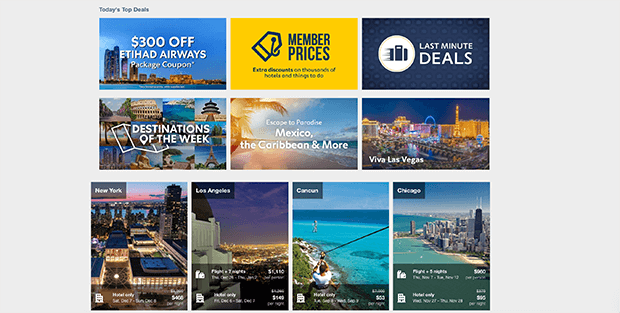
The second main cause of FOMO is events and parties (56%). People might feel less cool if they miss a party—especially when they see pictures on social media from who did attend and are posting pictures on social media.
Lastly, food is a big cause of FOMO (29%). Food FOMO might sound a little weird, but almost everyone has experienced it.
What does food FOMO look like? Here are a few FOMO examples:
Thinking for too long about what to order? Struggling to say no to a dinner invitation because you didn’t want to miss out on great food? Looking at pictures of food online and wishing you could have it right now?
Don’t worry, we’ve all been there.
5 Effective Ways You Can Use FOMO
Got the gist of what FOMO is but can’t think of how to use it in your marketing strategy?
Here are 5 effective ways to use FOMO:
1. Capture Visitor Attention With Real-Time Event Tracking
Real-time event tracking is a great way to get your visitors’ attention. You can put a notification at the bottom of the page to show product purchases, demo registrations, or newsletter signups. People will feel more at ease, knowing that other people are taking action with your product.
A social proof and FOMO tool like TrustPulse can boost your conversions by up to 15% using real-time event tracking. TrustPulse has features designed to create FOMO in shoppers with real-time activity.
![]()
2. Use “On Fire” Notifications To Create Excitement
“On fire” notifications are small notification bubbles on the bottom of the page that show visitors how many people are taking action in a given amount of time. This pushes people into thinking they, too need to take action quickly.
Pro tip: Place this type of notification on landing pages and checkout pages for the highest conversion rate and to minimize abandoned shopping carts.
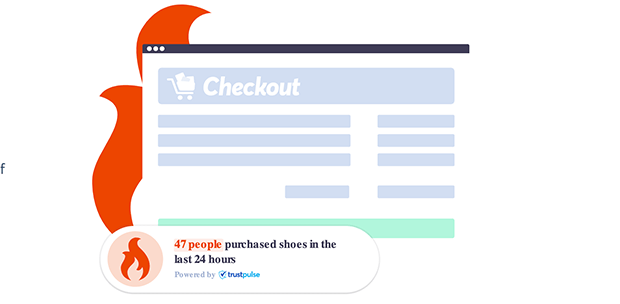
TrustPulse is the best way to add FOMO and social proof to your site, getting you more conversions instantly! Get started with TrustPulse today!
3. Show FOMO to the Right People
Use advanced features like OptinMonster’s geo-location targeting and referrer detection tool to show your notifications to the right people at the right time.
The geo-location tool will help you determine your audience’s geographic and show relevant campaigns based on users’ locations. Similarly, the referrer detection tool will show you where your traffic is coming from so you can show specific campaigns.
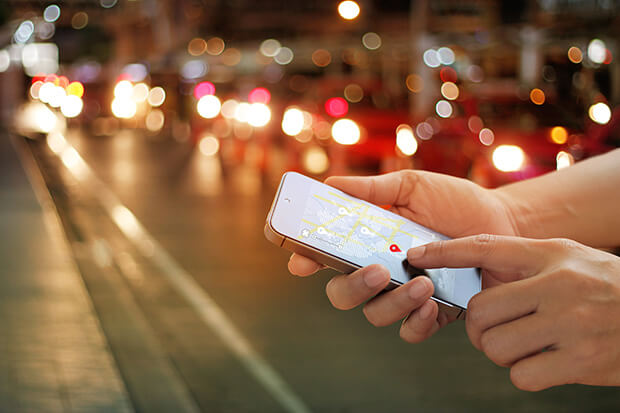
4. Use Clever Wording in Your Messages
Word choice has a big impact on FOMO. Try using power words like “limited time”, “don’t miss out”, or “free”. Using capitals, exclamation, and question marks is also great for engaging users.
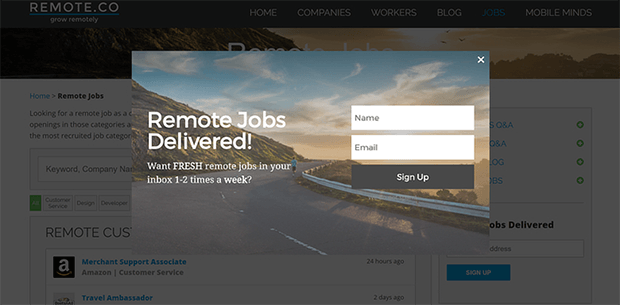
5. Quote a Celebrity, Influencer, or Authority
Including a quote from someone of influence can significantly boost FOMO. This works well if you include it on your landing and checkout page. As people are about to complete their purchase, they’ll have extra assurance that someone they look up to has also used the product.
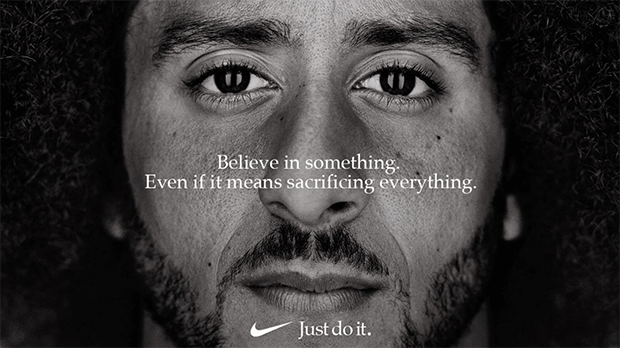
Things To Watch Out for When Using FOMO
As a marketer or eCommerce store owner, there are many benefits to using FOMO. It’s a great way to push customers to make a purchase.
However, there’s one important thing to remember when using FOMO in your marketing strategy.
For starters, it’s important not to go overboard as it’s meant to trigger negative emotions and make people feel uneasy. This could drive a wedge between you and your customers.
A study by Citizen Relation found that FOMO triggers different emotions in people.
- 30% of people felt jealousy
- 39% of people felt envy
- 21% of people felt sad or disappointed
You don’t want your customers to feel like this, do you? That’s why using just the right amount of FOMO is important so your customers don’t even realize they’ve experienced it.
That’s a wrap! We hope you understand exactly what FOMO is and have the FOMO statistics you need to figure out the best ways to use it in your marketing.
Can’t get enough stats in your life? Take a look at social proof statistics and Affiliate Marketing Statistics showing how effective they can be for your business.
